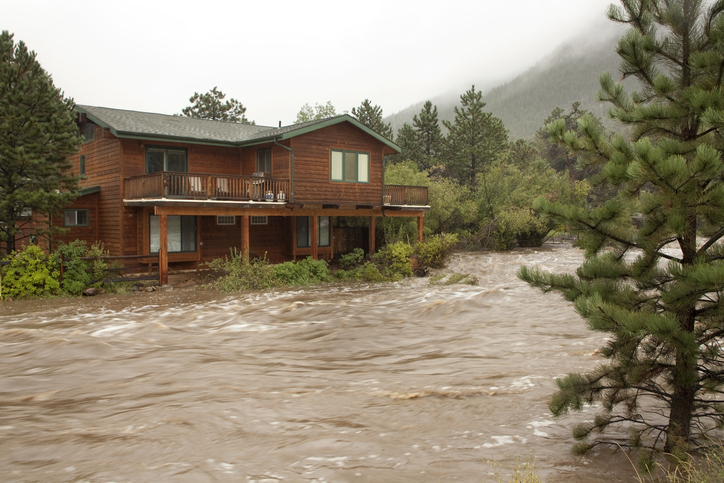Natural disasters are unpredictable, cause destruction, and create dangerous conditions for you and your neighbors. The rise in wildfires and dry weather are contributing to the risks of flooding in Colorado. This is a look at the relationship between these two weather conditions, and how we might be able to better prepare for potential damages from flooding.
How Floods Occur After Fire
The National Weather Service (NWS) uses the latest technology to forecast weather patterns and provide warnings to localities. The tech also provides strategies to protect our homes and lives during natural disasters.
According to their research, locations that are downhill and downstream from burned areas are more susceptible to Flash Flooding and Debris Flows. In areas where the fire burns hot enough or long enough, soils develop a layer that repels water, like rain on pavement. Rainfall that would normally be absorbed by the forest canopy and loose tree litter on the ground will instead quickly run off. Because of this, much less rainfall is required to produce a flash flood. A good rule of thumb is: “If you can look uphill from where you are and see a burnt-out area, you are at risk.”
Droughts Cause Flash Flooding
A good rainstorm can seem like a welcome event after a drought. But after too long in drought conditions, the ground is thirsty and could be too dry to welcome saturation, resulting in the risk of a flash flood. “A drought hardens the ground,” Meteorologist Justin Ballard said, “when it rains, it’s like pouring water on concrete.” It is important to be cautious when it rains during or after a drought.
Floods Increase in Low-Risk Areas
FEMA similarly advises that wildfires leave the ground charred, barren, and unable to absorb water, creating conditions ripe for flash flooding and mudflow.
But FEMA also advises that flood damage can occur even in low-risk areas. From 2014 to 2018, policyholders outside high-risk flood areas filed over 40% of all NFIP flood insurance claims and required one-third of federal disaster assistance for flooding. It is important to be prepared for flooding* even if you may be living in a normally low-risk area, especially after a season of drought.
*Also be aware of the exception to the 30-day waiting period when purchasing flood insurance. The Post-Wildfire Exception of the 30-day waiting period is determined on a case-by-case basis at the time of loss, so do your diligence when seeking a flood-insurance policy today.
Wildfires add to flood conditions by destroying plants and vegetation that normally help absorb rainwater. There are ways to mitigate risks, such as the addition of a variety of plants and crops to farmland before situations worsen during a drought.
Even if you don’t live in a flood zone, flood insurance may be crucial to repairing your home after a flood. To learn more about our flood insurance options, contact a Farm Bureau Insurance agent using our Agent Finder today.

